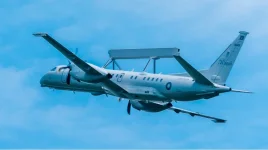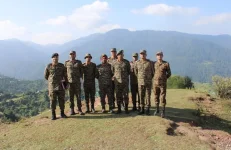- Views: 1K
- Replies: 6

In a hypothetical conflict scenario, the Indian Air Force (IAF) has reportedly planned a massive strike on Pakistan's Sargodha Air Base, utilizing over 120 air-launched ballistic missiles (ALBMs) within the first 24 hours of engagement. This operation, if executed, could significantly alter the balance of power in the region.
According to defence analysts, the operation would likely involve IAF Mirage 2000 and Su-30MKI aircraft, armed with ALBMs, taking off from various bases in northern India. These aircraft would fly towards the border, potentially employing low-altitude flight paths and electronic countermeasures to evade Pakistani radar systems. The use of ALBMs, with their ballistic trajectory and steep angle of attack, would minimize the reaction time for Pakistani defence systems.
Sargodha Air Base, a critical hub for the Pakistan Air Force (PAF), houses vital operational and training assets, including the prestigious Combat Commanders' School. The sheer volume of missiles reportedly designated for this target suggests an IAF strategy aimed at crippling the PAF's operational capabilities early in the conflict. The ALBMs would target runways, hangars, fuel depots, and command centers, aiming to maximize damage and disrupt PAF operations.
The immediate aftermath of such a strike is anticipated to be severe. The destruction of infrastructure would likely ground a significant portion of the PAF's fleet, while casualties and equipment losses would impact morale and operational readiness. The PAF would likely retaliate with counterstrikes on Indian airbases and attempt to scramble any remaining aircraft. Electronic warfare and missile defence systems would also be deployed to mitigate further IAF attacks.
This hypothetical strike carries a high risk of escalation. Pakistan might resort to nuclear threats or initiate broader military actions, including ground incursions or naval operations, to regain the initiative. The international community would react swiftly, with major powers like the United States and China, along with the United Nations, engaging in diplomatic efforts to de-escalate the conflict.
The IAF would need to maintain air superiority and be prepared for counterattacks. Further strategic strikes might be necessary if the initial attack fails to achieve the desired strategic paralysis.
While the IAF could potentially achieve a significant tactical victory by degrading the PAF's capabilities, the strategic landscape would become highly volatile. The first 24 hours of such a conflict would set the stage for a prolonged and unpredictable confrontation, with the potential for regional involvement and even the invocation of nuclear deterrence policies. The effectiveness of the strike would depend on the actual damage inflicted, the PAF's response and recovery capabilities, and the broader geopolitical context at the time of the conflict.


